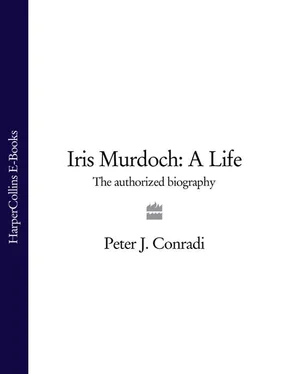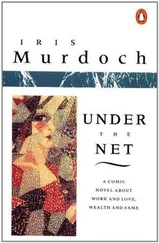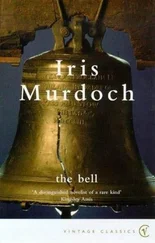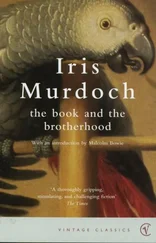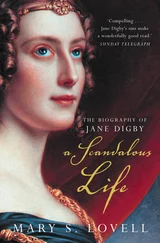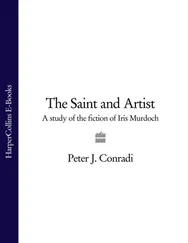From 1906 the girls lived with their grandfather at 59 Blessington Street, a ‘wide, sad, dirty street’, Iris wrote, with ‘its own quiet air of dereliction, a street leading nowhere, always full of idling dogs and open doorways’. 47It runs parallel to Leopold Bloom’s Eccles Street close by, and is halfway between St Joseph’s Carmelite Church and the Anglican ‘Black’ Church, at the heart of that cheerless north inner city to which the Joyces retreated across the Liffey, with all their baggage in two large yellow caravans,
when their fortunes took a downturn. Within a twilit world there are degrees of gloom and seediness. It is not hard to see why the 1906 move that Rene’s grandfather made, away from the address given as 34 ‘Upper’ Rutland Street, 48where Rene and Gertie were growing up, was propitious. A street of ill-repute, Joyce placed Nighttown and its brothels at the end of it at that time.
The northern inner city 49had been defeated first by the Duke of Leinster choosing in the 1740s to build on the South Side —'Where I build, Fashion will follow’ – and next by the exodus of gentry to England from around Luke Gardiner’s Mountjoy Square after the 1801 Act of Union. But, above all, by the massive immigration into the area of starving country people during and after the Famine, resulting in the division of whole terraces into tenements. In their novel The Real Charlotte Somerville and Ross’s down-at-heel, petit-bourgeois, essentially vulgar Protestant heroine Francie lives, in 1895, around Mountjoy Square, very near Blessington Street — like the Richardsons. 50Today number 59 is divided into seven flats, the ground floor having been around 1990 a betting-shop.
A marriage brings two worlds, as well as two people, into collision. Hughes’s cousin Don Douglas, grandson of Elias and so a ‘solid’ Murdoch by birth, regarded the Richardsons as rackety, and recalled Hughes’s marriage as a serious social blunder. 51If Rene had, by the hypocritical standards of the day, ‘got herself into trouble’, such odium would be explained. Her sister Gertie must also have been pregnant when she married, on 22 February 1919: Gertie gave birth at 59 Blessington Street to her eldest child Victor four months later, only three weeks before Iris was born at the identical address, probably in the same room. Gertie’s Scottish husband Thomas Bell, like Hughes, was a Second Lieutenant in King Edward’s Horse. There must have been a double courtship. It is striking that there is no Murdoch witness to Iris’s parents’ marriage certificate, especially as Hughes’s uncle lived close by in Kingstown, and his mother and sisters in Belfast.* Rene’s father is moreover shown, erroneously, as a solicitor (deceased). The Law Society in Dublin has no record of a solicitor called Effingham Richardson. In fact he worked in a solicitor’s office, ‘law assistant’ probably signifying a clerk. Perhaps Rene and Gertie enhanced his status to compensate for any loss of caste on Hughes’s part, or perhaps their mother had misremembered and misinformed them.
Iris’s birth at 59 Blessington Street was probably difficult, perhaps, John Bayley believed, with the umbilical cord wrapped around the baby’s neck. Rene had also had a rough time from Hughes’s sisters and mother. She ‘didn’t fit in with the Protestant ethic’, thought Iris’s first cousin Cleaver Chapman. 52As an Elder in the Apsley Hall Brethren assembly, his words come with some authority. Rene was beautifully made-up, cheerful and bright; she loved the coffee-shop, Cardews, in Kildare Street, where she went as a ‘flapper’. Her new sister-in-law, ‘wonderful’ 53Aunt Ella, was bossy and critical and on occasion ungenerous, smiling but lacking charity. Rene handled the disapproval very well, with tact, patience and good grace.
Rene liked to joke about North and South Dublin, and to be ironical at her own expense, socially speaking. When Iris’s husband John Bayley in later life complimented her gallantly by saying that he was sure Rene must have been ‘the toast of Dublin’ when she was a girl, she would jokingly reply, ‘Only of North Dublin.’ 54While Dublin north of the River Liffey was seedy and poor, the rich, smart suburbs stretched out to the south, from Rathmines to Dalkey. None the less, Rene had started to make her mark as a singer, and as a charming and modest personality. Like her mother-in-law, she had a happy temperament. There was a great deal of amateur opera about in Dublin, ‘that great singing city’, as Joyce’s own life, and his story ‘The Dead’, display. After her marriage Rene gave up professional performance, although choir-singing continued, and her beautiful voice was most often heard privately. She never said she minded abandoning her training, had ‘no great agony about it’, and appeared indifferent to fame and ambition. She knew she was talented, but did not take her gift too seriously. Iris, on the other hand, minded for her, and grieved for her mother’s loss of career. 55In her fiction she depicted wife after wife who has abandoned career for her husband. 56
The fine comic writer Honor Tracy 57first met Iris and John in Dalkey around 1958. A big jolly woman with rubicund and endearingly porcine features, Honor wore her flaming Anglo-Norman red hair somewhere between en brosse and beehive, had an occasionally combative manner, and appeared to be one (mainly) for the ladies. 58Thus began a close friendship that survived until Tracy’s death in 1989. Over the following thirty years her graphic letters provide an extravagant, loving, tough-minded and unreliable chorus to Iris’s developing self-invention and what Tracy termed her ‘weird extravagant fancies’:
You ask how Irish she is – the answer is, strictly not at all. Her father was of Ulster Protestant stock, but that is really a Scottish race, and Murdoch is a Scottish name. Mr Murdoch was a Civil Servant and happened to be posted to Dublin (pre-Republic) for a short time, during which Iris was born. She makes the most of it, as people are very apt to do: the number of English people who claim ‘Irish grandmothers’ is a famous joke in Ireland. 59
The ‘Jean’ of Jean Iris Murdoch must indeed be Scots-Irish, from the Murdoch side, albeit never used. From the first she was known as ‘Iris’, complementing her mother’s ‘Irene’. 60One charm of her name is that ‘Iris’ does not quite belong to ‘Murdoch': ‘Jean’ or ‘Jeannie’ Murdoch might be some tough lady from Glasgow; Iris Murdoch confounds two sets of expectations. An accidental charm is that another ‘Iris’ was goddess of rainbows, many-coloured, protean, hard to pin down.
‘Irish when it suits them, English when it does not,’ was what Honor Tracy’s erstwhile friend and neighbour Elizabeth Bowen said the ‘true’ Irish claimed of the Anglo-Irish – both the Protestant Anglo-Irish like the Bowens, and also ‘castle Catholics’ 61like the original Tracys. Tracy, for example, spoke aggressively County English when in England, yet with a brogue when the Bayleys visited her house on Achill Island in County Mayo. Is Tracy’s wit at Iris’s expense partly tribal? It is certainly an irony at the expense of someone who – to an extraordinary degree – was to become the darling of the English, far more than of the Irish, intellectual and cultural establishments. 62She loved to tease Iris about her Irishness in a way that was envious, admiring, combative, ignorant (as in her letter above) and flirtatious. Iris took this in good part – in The Red and the Green she was to create an Anglo-Irish character for whom calling himself Irish was ‘more of an act than a description, an assumption of a crest or a picturesque cockade’. 63Both Iris’s parents showed their Irishness in their voices. Rene had a Dublin voice, a ‘refined’ voice, with that Dublin habit of pronouncing ‘th’ as ‘t’, especially at the start of a word – for example, ‘t’ings like that’. Hughes had a very mild Ulster intonation and idiom: ‘Wait while I tell you!’ he would advise. Young Iris had a slight brogue, acquired from her parents. Well into adult life she would sometimes pronounce ‘I think’ as ‘I t’ink’. On 1 April 1954, on a trip to Glengarriff on the Beara peninsula, most westerly of all the peninsulas of Cork, she noted, ‘I have an only partly faked-up impression of being at home here.’
Читать дальше
